If you think you can afford to ignore niche keyword research in your SEO strategy, think again. Online marketers and SEO experts have to be really nimble-footed nowadays to keep pace with Google search algorithmic updates. Read this guide on how to do niche marketing and how to find niche keywords.
However, one thing that remains unchanged and highly consistent with inbound marketing in terms of search engine optimization is finding and targeting the right keywords. This guide will talk about niche keywords, their importance, and steps to find them.
Niche marketing defined is features and segmenting designed to attract and add value to a specific market niche.
What is a niche in SEO?
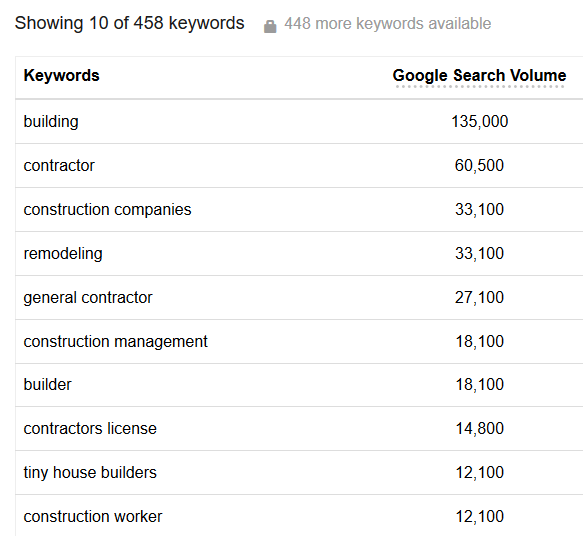
Keywords that are highly specific to a narrow industry vertical are known as niche keywords. These are almost always long tail keywords which help you rank higher. They are more important than broad, popular terms when it comes to optimizing your site and pay-per-click campaigns.
Why is finding niche keywords important?
It is important to identify niche keywords since these are the terms your potential customers would be using. You can reform your content and larger marketing strategy with the insight you glean from a systematic niche keyword research for directories and other placements.
As SEO has evolved over the years, it has become a fact that matching content with actual keyword phrases is no longer important. Google has employed some serious efforts to understand the intent behind various searches. You need to identify search intent and match your content to address that intent.
You would think keyword research was an outdated process after learning this. But, that is not the case.
By identifying industry-specific keywords, you identify the topics people care about. By using the right SEO tool you can even measure the popularity of these topics. You need to understand that the operative term here is topics.
By conducting a thorough keyword research you can pinpoint the keywords getting high search volume and then create a content strategy to address these topics. You can then use them to determine primary keywords, LSI and relevant keywords specific to your particular industry. Competitive niches benefit from a blogger outreach program.
This is how you can find relevant niche keywords.
Step 1: Make a list of industry-specific relevant topics
You need to make a list of all relevant and important topics based on what you know about your industry and business.
Think about topics in generic groups. You should be able to come up with 5 – 10 groups that you think are relevant to your industry and important to your business. You will use these group topics to find specific keywords later in the process.

The process is easier if you already maintain a business blog. Simply pick up the topics you create content for frequently. If you are selling a product or a service, then look for the topics that come up most frequently in sales conversations.
Think of it from the buyer’s perspective. What kind of questions do buyers have before they zero down on a product? Or, what information are potential customers looking for even before they have decided to purchase a product.
You need to find topics your target audience is looking for. For instance, if you were selling marketing software, then your topic buckets would be inbound marketing, email marketing, lead generation, blogging, SEO, and social media marketing among many others.
There are many popular online SEO tools that you can use to find monthly search volume for individual topics. This data can be very important in gauging the importance particular topics hold to your audience. For successful topics, you should focus on creating many different sub-topics.
Step 2: Identify group keywords
Now that you have your topic groups listed out clearly, it is time to identify the different keywords that fall into these groups.
Look for those keyword phrases that are relevant to your niche. Your target customers should be using these terms (or similar terms) in their searches.
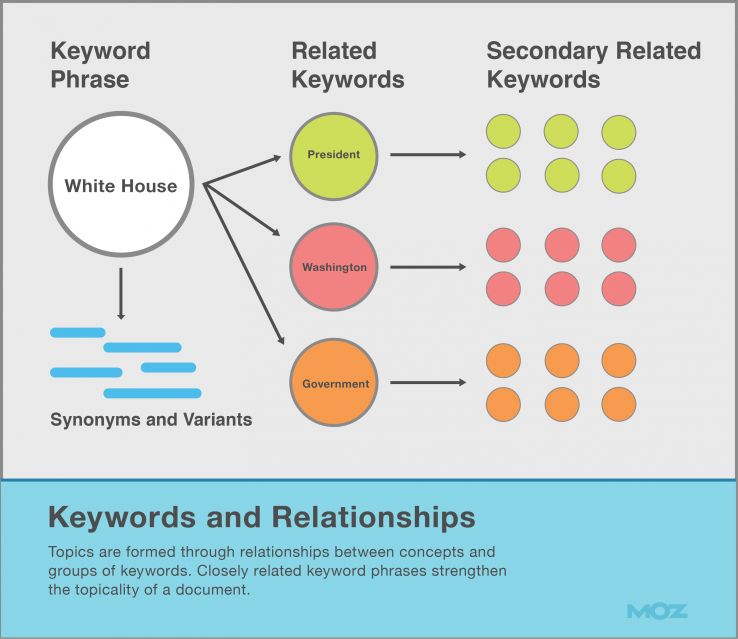
For instance, continuing with the example of marketing software, if the keyword is “marketing automation”, then niche keyword phrases that people would use to search for this would be:
- How to use marketing automation & guest post tools
- Marketing automation software
- Which is the best marketing automation tool
- Do I need a marketing automation software
- Top automation software
- Lead nurturing
The list can go on and on. It is important to understand that in this step you are listing out a broad purview of all keywords that fall in particular topic buckets.
This is not your final niche keyword list. You are looking to end up with a brain dump of various phrases you think potential customers may use as search phrases to find content related to that particular topic group.
Go all out during this step and identify as many relevant phrases as you can. There are several data-driven tools that you can use to narrow down the list based on relevance and popularity. These tools will also help you identify the keywords you are most likely to rank for.
Another way to identify group keywords is to find the phrases your site is already ranking for. Google constantly encrypts an increasing number of keywords. However, it is worthwhile to find the search phrases that your website is getting found for.
You will need website analytics software to get this done. Google Analytics is the best tool for this.
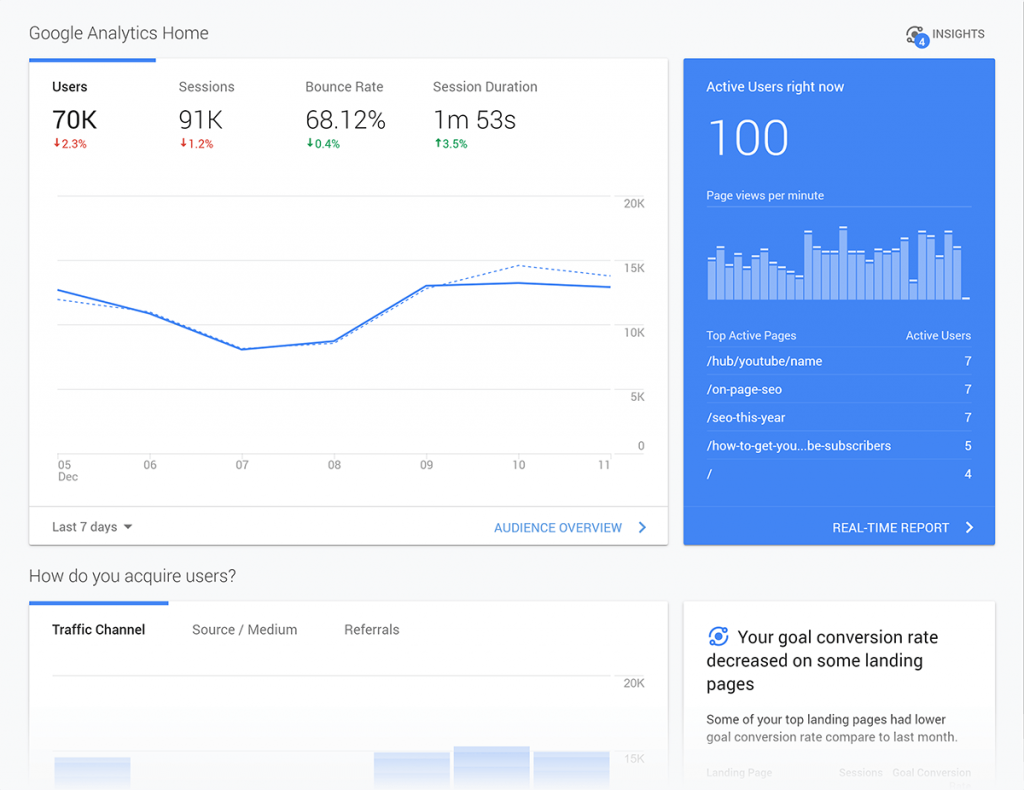
Simply, look into traffic sources of your website and sift through the various organic search traffic groups to identify the keywords and search phrases people use to arrive at your webpages. Repeat this for as many topic groups as you have.
Remember that you can always head over to your sales, service, or any other customer-facing colleague to get an understanding of the terms customers use and the common questions they have.
Step 3: Find related search terms
Researching related search terms to the ones you already have is a great way of filling out your list. Google has a dedicated related keyword section at the bottom of every search results page. If you are struggling to find more niche-specific keywords then go to Google.com and plug in individual keywords.
The suggestions at the end of the page may do a lot more than spark ideas for other keywords. These may also go a long way in understanding the terms your competitors are ranking for.
Don’t forget to explore more options by checking out the related search terms of the new keywords you find. If you want you can use keyword research tools to make this easier for you.
Take a look at the “People also ask” section. This is the section that lays out all related questions that are common among people with a particular search query.
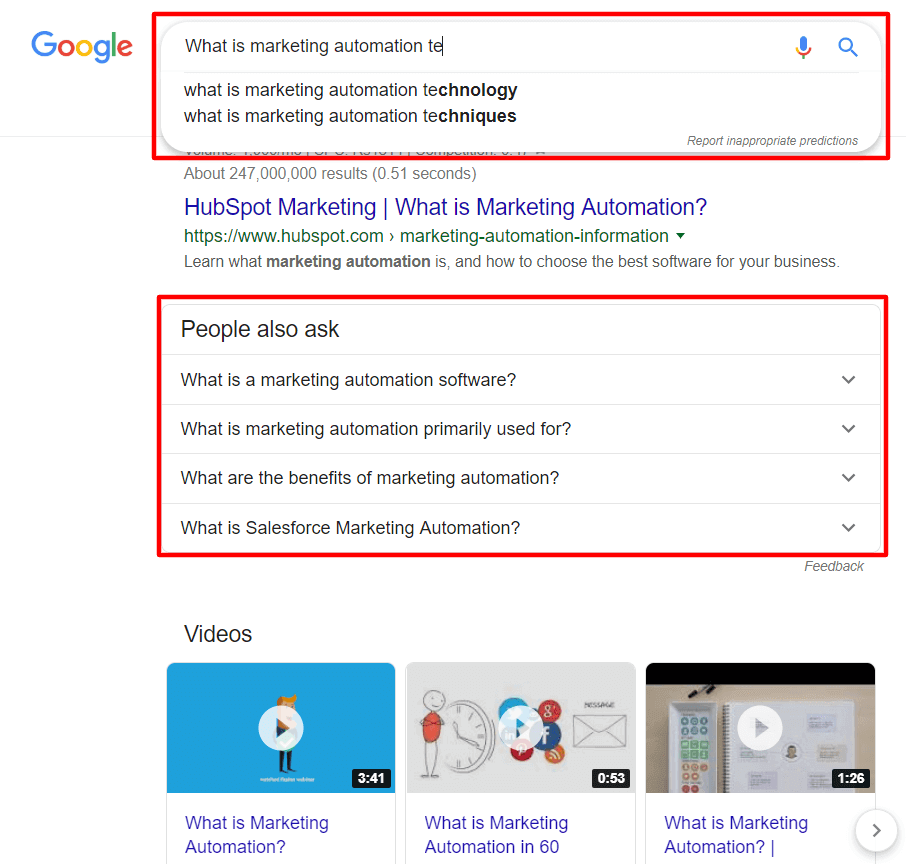
This section can be a goldmine of keyword ideas that are relevant to your niche. It can also lend you a broader insight into what your potential customers are looking for before they take a purchase decision.
Step 4: Aim for a good keyword mix
A good keyword research strategy is to aim for a mix of long-tail and head terms keywords in each topic group. Head terms keywords are generally shorter and more generic. This is an important part of off page SEO.
These are typically shorter than three words and are direct as well as concise. Long-tail keywords on the other hand are much longer, containing more than 4 words.
You should focus on a well-balanced keyword strategy that gives you short-term wins and is adequate to attain long-term goals. It should have a mix of both long-term keywords and head terms.
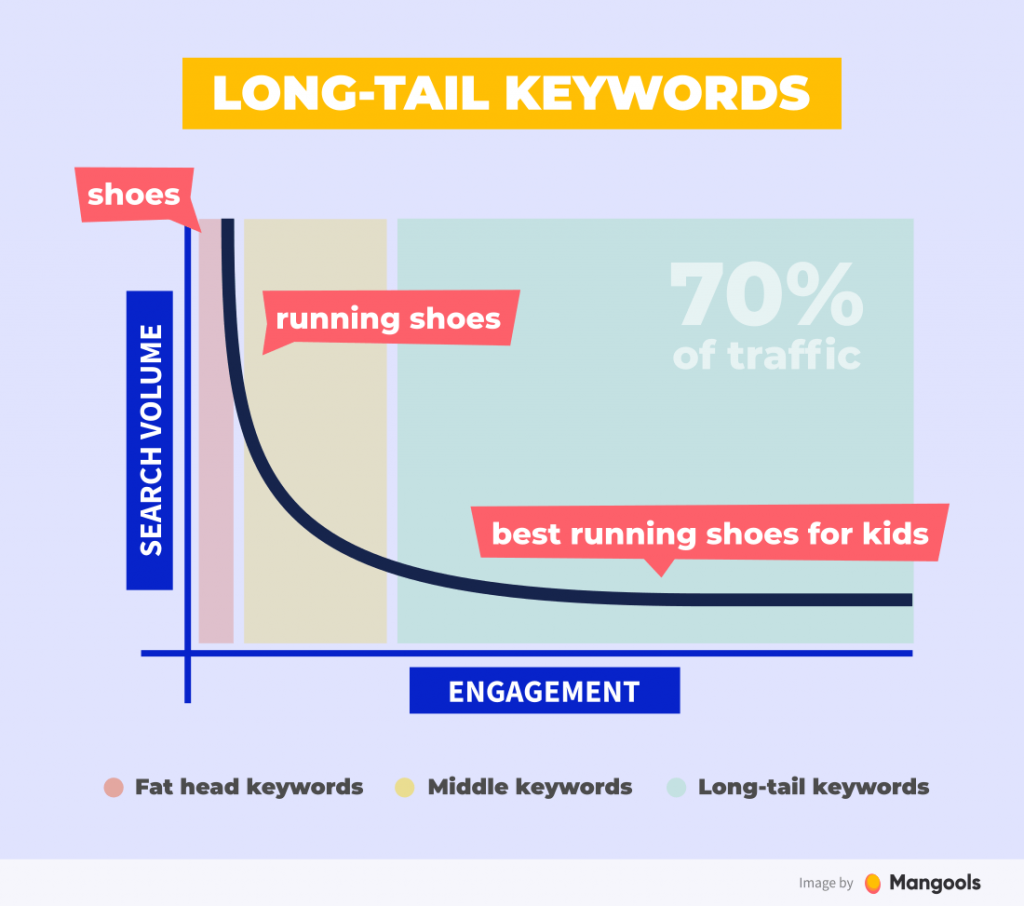
This is because head terms are generally searched more frequently than long-tail keywords. They are much more competitive and difficult to rank for as compared to long-term keywords. This is what good blogger outreach agencies understand, however you can learn yourself.
Here’s an example, “blogging” and “how to create a blog post” are both keywords. “Blogging” is a head term keyword and will have businesses from various verticals vying for a ranking spot as compared to the long-tail “how to create a blog post” which is a bit more industry-specific.
There is no denying the fact that there are niche-specific head terms keywords and that these will boost your search volume, but the traffic you get from long-tail keywords will any day be more desirable.
This is because anyone who is specific is more likely to convert into a sales prospect. Qualified searchers are far better than generic ones.
Another benefit of long-tail keywords is that they are specific and it is usually easier to satisfy search intent with them. You know exactly what the user wants when they search for “how to create a blog post” as compared to a simple one word “blogging”.
Someone using “blogging” as a keyword could be searching for anything in the blog space. This could be completely unrelated to your business. It could increase your bounce back rate and demote your page ranking, for no fault of yours. Have a look here at some other top SEO ranking factors.
Hence, it is always better to stick with a mix of head terms and long-tail keywords that you know are relevant to your niche and business. Long-tail keywords will give you some quick wins and pave the way for you to begin chipping away at more difficult niche head terms over the long haul.
Step 5: Conduct a competitor analysis
It is wise to see how your competitors are faring for specific keywords you are hoping to rank for. However, note that just because your competitors are ranking for certain keywords, doesn’t mean you have to do the same.
That said, you can give your list a great competitive boost by identifying the keywords your rivals are ranking for.
If you find duplicate keywords –the keyword on your list is the same as the one your competitor is ranking for – then it makes sense to work on improving your ranking for those. At the same time, don’t ignore the keywords you know are important, but are not ranked for by your competitors.

These keywords could be a great opportunity for you to own the untapped market share. As with long-tail and head terms keywords, it is important to maintain a balance of terms between the ones that are difficult due to competition and the ones that are realistic.
Remember, the goal is to end up with a list of niche keywords that provide few quick wins, but are also helpful towards attaining bigger and challenging SEO goals.
Now, if you are worried about the sheer amount of time it will take you to manually identify the terms your competitors are ranking for, then use the handy tool provided by SEMrush.
This will allow you to run a number of free reports to show the top keywords for that particular domain. This can be a quick way to understand the type of terms your competitors are ranking for.
Step 6: Trim the niche keyword list for blogger outreach
Once you have the right mix of keywords in terms of type and difficulty, it is time to narrow down the list using Google AdWords Keyword Planner particularly if launching a blogger outreach campaign.
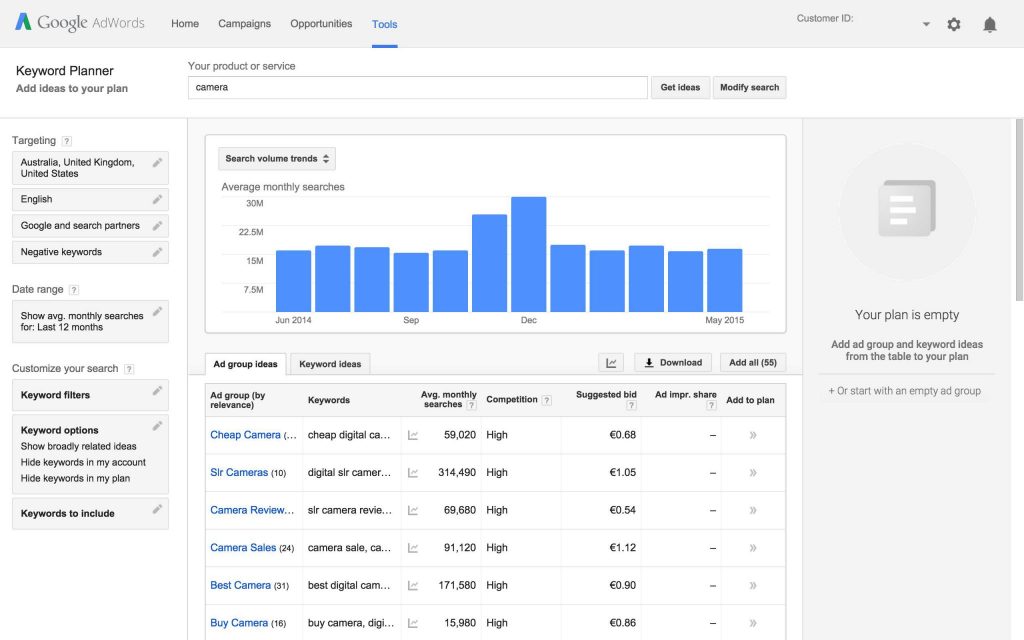
This will help you attain more quantitative data in terms of your keyword list. Don’t worry if you don’t have AdWords set up. You can always create an account even if you don’t have to create an ad. You will also require Google Trends.
You can get traffic estimate and search volumes for your niche keywords under consideration by using Keyword Planner. This tool was previously known as Keyword Tool, but during upgrades Google essentially stripped away some exciting features that made up for interesting functionality. The good news is you can use Google Trends to fill in the blanks.
Keyword Planner will let you flag those keyword terms that have too much or too less search volume. Before you omit any keywords, check them on Google Trends to ascertain their trend history and projections.
There are always some low-volume terms that are worth investing now to reap the benefits later. Or, you could use the tools to identify the terms that are trending upwards and are worth more focus.
Final Thoughts
With these steps you will have a list of niche keywords and the topics that are of interest to your potential customers. It will help you focus on the right topics to achieve both long-term and short-term gains. It is important to maintain a balance in your keyword list.
Make sure that you re-evaluate your keywords every few months. Most businesses prefer doing this every quarter. As you slowly attain a position of authority in the SERPs, you will be able to add more niche keywords to your list while you work to maintain your current presence.
Further Reading;
See Blogger Outreach Best Practices
